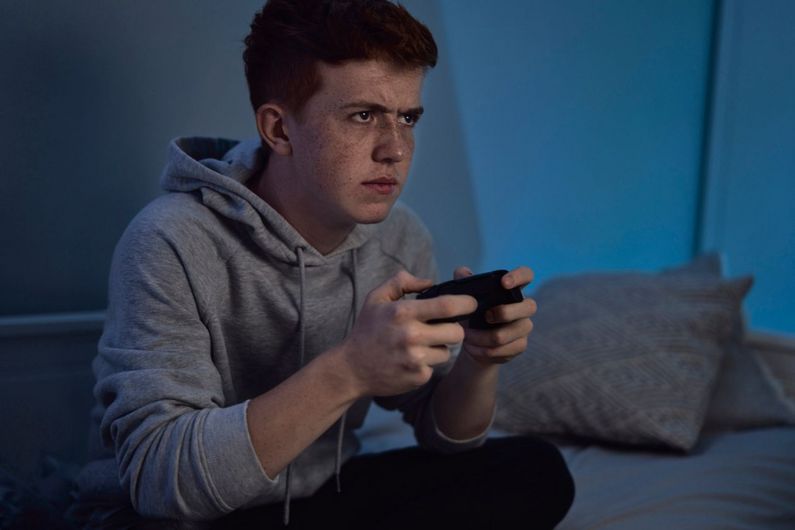Video game trauma can last for years
- UdeMNouvelles
02/08/2024
- Virginie Soffer
Some horror video games leave players with wounds that take a long time to heal, an UdeM researcher finds.
Cry of Fear is a horror video game that explores a wide range of particularly sensitive topics, from depression to self-harm, murder, and suicide. And Samuel Poirier-Poulin knows the game well.
A lecturer and doctoral student in the Department of Art History and Film Studies at Université de Montréal, Poirier-Poulin has spent time analyzing it – and comes to a disturbing conclusion.
Games such as Cry of Fear can trigger intense emotions in players, a type of “videoludic trauma” that continues to resonate long after the game has ended, he found.
Fright is inherent
Studies of horror in movies and video games have often suggested that the pleasure that players get from being frightened is rooted in the games' inherent safety. As players move through its virtual environment, they’re never in any real danger.
Bernard Perron, a professor in Poirier-Poulin's department, has described this fear as “gameplay emotion.” But while the lecturer found that interpretation compelling, it didn't fully describe his own experience with Cry of Fear. So to get a clearer picture, he turned to the field of trauma studies.
“Trauma studies have made significant headway since the ’90s,” Poirier-Poulin said. “We’re no longer just looking at trauma caused by horrifying events such as murder, car accidents or sexual assault. Research has shown that some people experience daily trauma from events such as cyclical family abuse or insidious forms of microaggression.”
It would be inaccurate, however, to lump videoludic trauma in with other forms of trauma, he added.
“Games such as Cry of Fear can blur the line between fiction and reality,” Poirier-Poulin said. “When the two worlds ‘bleed’ into each other, the player can get hurt.”
'Bleeding' between worlds
The notion of spillover or “bleed” between worlds has been used in describing live-action role-play (LARP), a popular subject of study by researchers in Nordic countries.
In particular, they've looked at situations where the player embodies a fictional character. “For example, let’s say I’m LARPing,” Poirier-Poulin said, “and my character is in a relationship with another character. We’re not a couple in real life, but the fiction may lead me to start developing feelings for the other person.”
Some LARP games in Nordic countries deliberately introduce violence. Sensitive subjects such as rape may be verbalized, though they are not acted out. And because players physically embody their characters, extreme experiences such as these can leave a lasting mark on a player’s psyche, even though they are fictional.
Video game players don’t have quite the same experience, but emotions can still bleed from the character to the player.
This can be the case with particularly violent video games, such as Spec Ops: The Line, in which players must use white phosphorus, a highly controversial incendiary weapon, to destroy an enemy camp, only to find they have unwittingly killed dozens of civilians. Poirier-Poulin quotes at length from researcher Tobi Smethurst’s description of the experience:
“I was the one who had pushed the buttons and dropped the bombs. Whether or not I knew I was doing it at the time, I had a hand in murdering those civilians. I did not experience the same trauma afterwards that the protagonist did, of course, but his reactions were certainly not too far from my own. I have taken thousands upon thousands of virtual lives, but these were the first for which I truly felt that I shared the burden of guilt.
“Rationally, I knew this was absurd. Afterwards I reminded myself that these were virtual civilians, not real ones; and besides, the game is programmed in such a way that if you want to finish it, you have to use the white phosphorus… But none of this rationalization changed how horrified I had felt, along with the protagonist, on discovering the charred bodies that he/we/I had produced. If trauma studies has taught me one thing, it is that fictional events can have real effects on one’s outlook and ethics… The fact that I felt the need to rationalize my guilt over Spec Ops: The Line in the first place demonstrated just how ‘real’ of an effect the game had had on me.”
A state of hyperarousal
The overall vibe of Cry of Fear generates a steady stream of horrifying sensations, Poirier-Poulin noted. Its dark graphics were designed to underscore the main character’s depression and create a horror-inducing ambiance to keep the player in a state of hyperarousal.
“At times, the sound cues give you a false sense of security,” he said. “You’re attacked by monsters that you don’t hear coming. So you’re always on high alert. This makes the game exhausting, because you feel like you never get a break.”
Poirier-Poulin believes that in video games where the protagonist plays an essential role in the plot and the player develops a strong bond with the character, it’s entirely plausible that emotions may bleed from the character to the player.
“At one point in the story,” Poirier-Poulin said, “you meet one of the character’s friends. For the span of a few minutes, you feel you can relax. You’re in a safe space. But it doesn’t last. The friend commits suicide by suddenly jumping off the top of a building. I remember wondering why I was still playing this absurd game, when it only made me suffer like Simon, the main character.”
Empathy is another key element that comes into play.
“You develop a close bond with the character,” Poirier-Poulin said. “For 15 hours or so, you see his personal history slowly unfold. You learn that he is depressed and you experience his depression with him. And in almost every ending to the game, you have to strangle your own character. You kill yourself by killing the character you have taken care of throughout the game.”
It is the combination of all these factors that produces something akin to trauma in the player, he said.
Analyzing his experience
For his research, Poirier-Poulin did not relish the idea of asking others to subject themselves to horror video games that he considered deeply upsetting.
Instead, he began by delving into his own gaming experience, borrowing from the transactional theory of reading developed by the late U.S. education specialist Louise Rosenblatt. Her theory holds that the meaning of a text resides neither in the text nor in the reader, but comes into being during the transaction between the two.
“Each person brings their own knowledge, experience, emotional baggage and expectations to the table,” Poirier-Poulin explained. “Consequently, the meaning of a text varies with each reader.” Similarly, each player brings their own experiences and emotional baggage to the video game, and as such, their reactions are also unique.
In the next stage of his research, Poirier-Poulin plans to analyze comments from online forums, such as Steam and Reddit, where people around the world discuss their gaming experiences. He noted that others who have played games with disturbing themes have had similar “before” and “after” gaming experiences, including lingering distressing emotions.
“Much work remains to be done on this subject,” he concluded.
“Videoludic trauma is a subjective experience. It will become easier to explore it as more players, scholars, critics, mental health professionals and trauma survivors begin to take an interest and write about their own gaming experiences.”
















